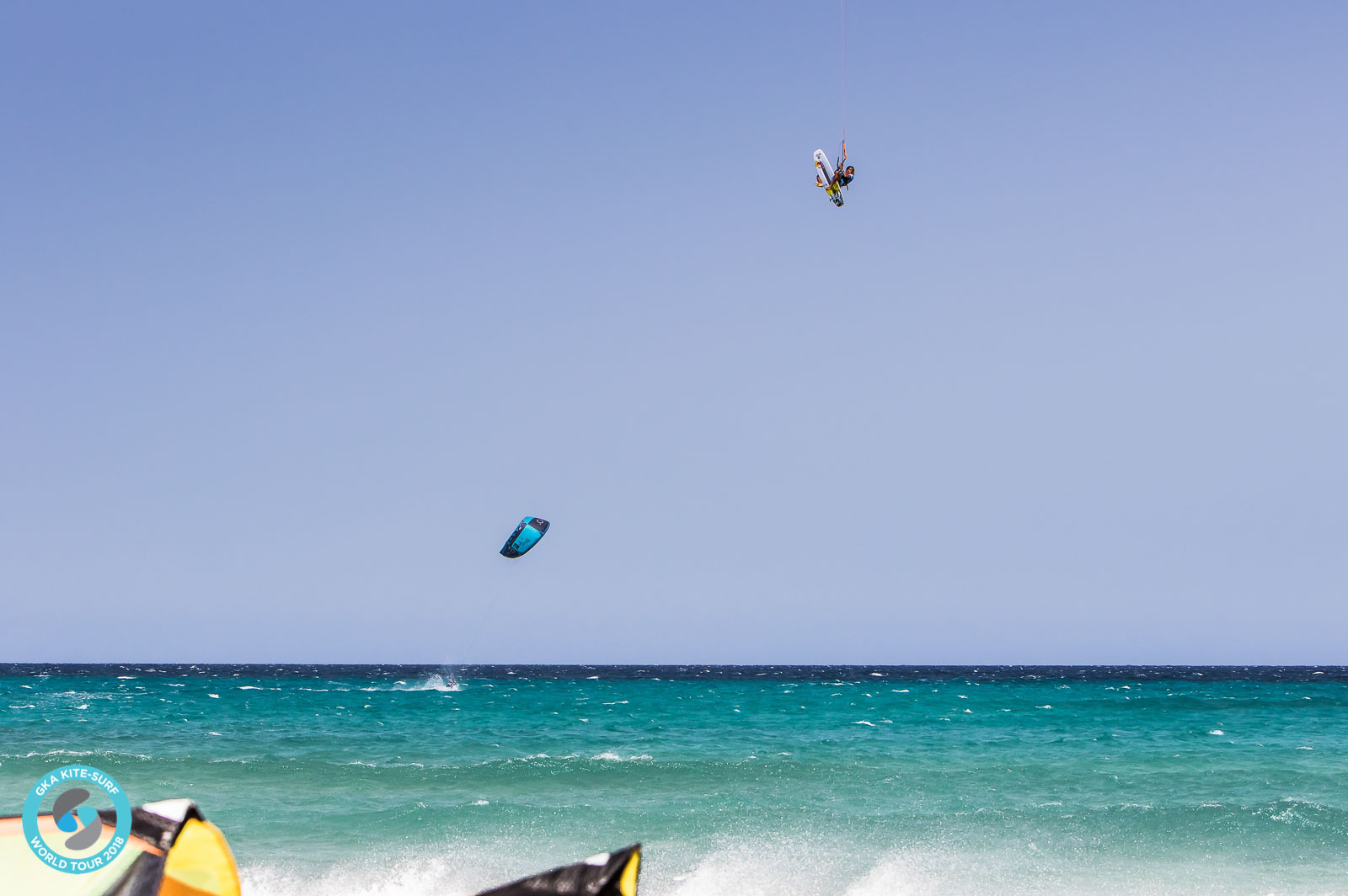How to make a Heli Loop
How to make a Heli Loop in Kitesurf?
In this post, we are going to teach you how to make a Heli Loop in a loop. Mastering this kitesurfing technique will make you take another step in your kitesurfing level.
Many kitesurfers first learned to jump and fly. At the end of the day, it is what is most “cool.” But we must not forget that the landing is equal to or more important than the jump since a bad movement in the landing can leave us without many future jumps for a long time.
We are going to teach you the key points to perform a Heli Loop with a safe landing in the water without problems.
What is a Heli Loop or helical loop?
The Heli Loop or helical loop jumps are an addition to any trick because they maximize the wind window.
They are used as a tool to make soft landings after a big jump (favourably from 8 meters in height).
The Heli loop (if done correctly) can lift you back into the air. Hence its name “Heli”.
Lets you hold onto the bar while descending for a smoother landing. At the same time, it allows you to last longer in the air. Let’s see how to do it in the section “How to make a Front Heli Loop” below.
What is the difference between Kiteloop and Heli Loop?
We must bear in mind that a kiteloop gives you a strong pull while a heli loop does not give you any pull, the latter’s movement is smoother by pulling a kiteloop before reaching the top of the jump. For this reason, we are going to teach you everything about this kitesurfing technique below.
Benefits
Do you jump over 8 meters?
The Heli Loop is only beneficial if you do a jump where you exceed 8 meters in height. This is the height at which your kite normally starts to rise as a result of the wind window.
How to make a Front Hand Heli Loop?
There are three key points when it comes to making a Front Hand Heli Loop.
For the kite: Get the kite to the park; in other words, make the kite stay still. When you do the jump, you are pulling the kite downwards. Therefore, the bar is also tensioned downwards. To stop the kite during the flight, what you must do is once you are under the kite, you must stop applying tension downwards and release the bar a little, sliding the kite bar upwards in this way.
Swing: Swing under the kite.
The turn: Directing it. When you are at the top of your “super jump” you should steer the kite rapidly back and forth. From the direction, you are coming from. This will ensure you stay in the air longer.
You have to keep in mind that the slower you do all these movements, the longer you will last sustained in the air. So go easy on it!
If it is not very windy, it is better to practice the Heli Loops with a giant kite. We recommend a kite between 10 and 12.
Start by landing without a Heli Loop. If someone watches you, you can perfect those mistakes you make without realizing it.
Common mistakes to avoid in Heli Loops
Three of the most common mistakes are:
1-One of the most common mistakes is to perform this technique too quickly.
2- Don’t go downwind when you land.
3- Pulling the bar up too soon before getting under the kite.
How to do a Back Hand Heli Loop
The “back-hand” method is much more difficult because you gain more speed in flight. And of course, the higher the speed, the more difficult.
We are going to explain the Back Hand Heli Loop with the same approach that we have described the Front Hand Heli Loop.
Steer the kite: It is the same as the front hand heli loop but with a nuance. We start by sending the kite forward. Then you should park the swing underneath and steer the kite around—only this time, with the back.
For the kite: When you reach the top of the jump, steer the kite forward (it may give you an extra boost, but the kite will push you when it descends in front of you as a result of the wind window).
Swing: Release the bar slightly, so the kite stays still and in this way you swing under it. Learn more by watching it in the video above
The turn: Under the kite, pull the bar again to pull the kite while gently turning your back to one side—the complete explanation in the video
Make sure to steer the kite smoothly and land downwind. It is better to start small!
